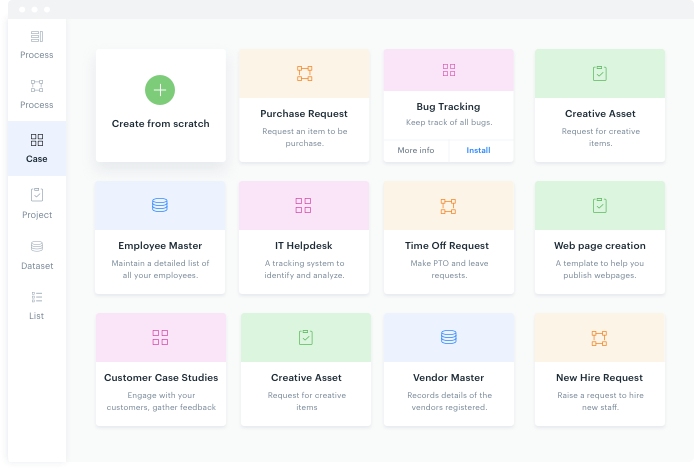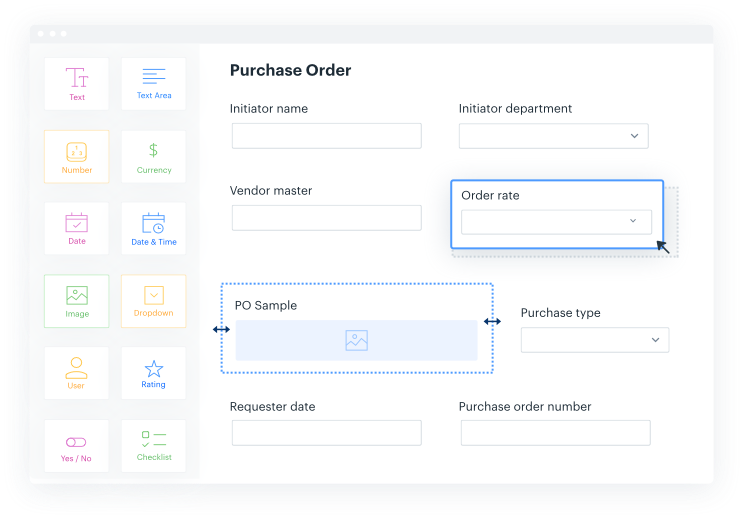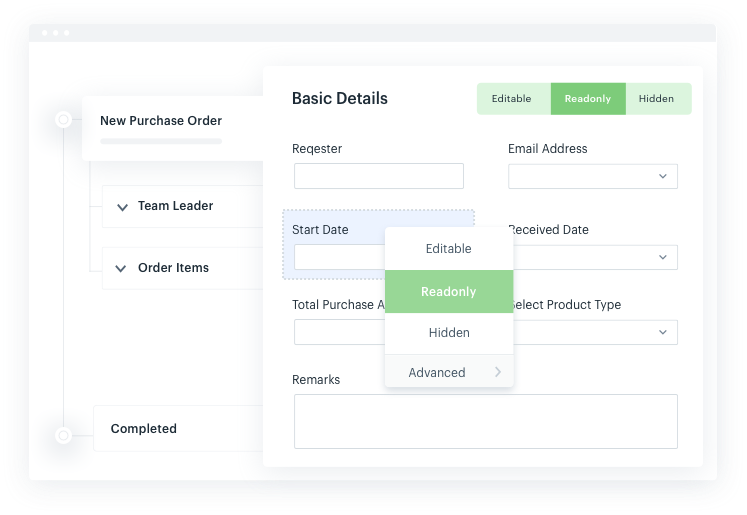When creating a better process, there’s one element that everyone goes to first. It’s not usually defining a better form, charting integrations, or improving notifications. The highlight of improving a process is the workflow design.
What is Workflow Design?
Workflow design happens when you map out the sequential tasks involved to take an item from ‘initiated’ to ‘processed’. In the process of workflow design, you get a chance to see the entire process and how data moves seamlessly from step to step.
Each task in the workflow should be assigned to either a single human, group of humans, or to a system.
There’s something essentially business-like about charting a clear, step-by-step path to get something from undone to done. Whether you use charts, whiteboards, a digital workflow design tool, or just the back of a napkin, designing the perfect workflow feels like the core of what a business does.

But while anyone can throw some arrows up on a wall, workflow design must be intelligent to work in the real world. When separated from the realities of the daily grind and multiple priorities, it might seem easy to create workflows. But when regular office life is added back in, the success of your workflow design tool is really tested.
Ready to see a Workflow Design Tool in action?
To show the power of workflow design, let’s look at a typical process that requires a top-notch workflow: employee onboarding.
Onboarding today is simply not cutting it
Employee onboarding may seem like a pretty simple workflow to design, but it’s a classic example of how the ideal can break down in the real world.
Most HR professionals can think through all the things needed to make sure a new employee starts off strong. From a letter from the CEO, to ensuring that a workspace is set up perfectly, to adding email accounts and granting access to essential software, the whole thing seems like it should go pretty smoothly.
Here are some more elements that need to be included:
- Workplace Culture
- Business Motives and Team Goals
- The Workspace
- Policies
- Documentation
- Meet the Team
It’s starting to look a little more complex, but still pretty manageable with workflow design done on the back of a napkin, right?
The dark side of bad workflow design
- Without a series of set guidelines, there’s no consistency. One HR employee in charge of onboarding may do things ‘their’ style, while another HR team member will have a slightly different approach. This means that the onboarding experience isn’t uniformly good: one day, it might be exemplary. Another day, it might be enough to make someone want to leave immediately.
- Onboarding can take more time than is really required. When there’s no coordination, there’s no telling when new employees can move from payroll (where they are being coached about salary accounts) to insurance (where a team member is waiting impatiently to set up their company insurance policy). This gap can occur between various steps, and cumulatively add up to multiple lost days.
- At any given point, finding out where a candidate is maybe a game of educated guesswork. If there’s no set sequence, then there’s no transparency as to what is going on at any given moment.
- Employees may feel let down if they are shuttled aimlessly between departments. The action-packed first day they looked forward to might turn out to be rather dull. This is a criminal waste when your office is actually an active, busy hub of creativity and excellence.
When you bring workflow design into the picture
Workflow design breaks down your onboarding process into logical steps. When good workflow design enters the picture, onboarding picks itself up from disorganized chaos and lands neatly on orderly productivity. Any stakeholder can track the status of a new joiner’s onboarding process at any given moment. The newly streamlined process can be run efficiently, just by design.
Here’s a list of advantages:
- Provides a clearly scheduled template for onboarding
- Reduces time spent on the onboarding procedure
- Reduces the scope for human error
- Makes for a consistently good onboarding experience
- Makes the process clear, transparent, and efficient
- Reduces the strain on HR
- Makes onboarding a pleasant experience
To explain how onboarding can change with workflow design, here’s how it works with Kissflow.
How to design an effective workflow
Designing effective workflow uplifts the performance of your processes.
Follow the below-mentioned steps to design a workflow:
- Outline your tasks that should be completed
- Identify your resources (input and output)
- Evaluate sub-workflows involved
- Find out who is accountable for each step and assign roles
- Create a workflow diagram to map out the process
- Implement automation wherever needed
- Analyze and test the workflow you created
- Make changes in the workflow depending on the bottleneck
- Train your team on the new workflow system
- Launch the new workflow and keep monitoring for continuous improvement
Incorporating workflow design through Kissflow
Kissflow’s simple visual design means that, once you’ve used workflow design techniques to break it down, you can easily build an app to run onboarding that’s perfectly consistent, quick, and efficient.
Create your processes
You can choose to create your own process from scratch, using Kissflow’s visual workflow design tool. Alternatively, you can choose a pre-built app from Kissflow’s library, and tweak it to your organization’s unique needs.

Customize your forms
Modify details like data fields, the sequence of tasks, and databases from where the app will pull the required data like employee name, date of joining, and so on.

Set permissions
Assign stakeholders, the individuals involved in the process, and set roles and responsibilities for all individuals. Define confidentiality settings and control who can initiate the process.

Publish your process
Once you’ve created the onboarding process you need, you can share it with your organizations. Call it the end of all onboarding-related email clutter, time delays, and disgruntled new employees!
Track Onboarding Progress
You can check the real-time onboarding status of any given employee, whenever you need to. Additionally, you can get one-click visual reports and automated validation.
Embracing workflow design in the age of automation
Given the advantages that a workflow management tool like Kissflow Workflow brings to onboarding, it’s a good idea to get on the workflow design bandwagon today. Try it with your organization’s onboarding today, and you’ll see for yourself the undeniable difference it makes.
Streamline your workflow and achieve more!
More about Workflow Designs
What is the purpose of workflow design?
Workflow design aims to create a systematic, streamlined process for completing tasks and achieving business goals. Workflow design involves analyzing and mapping out the steps of a business process, identifying areas of inefficiency or duplication, and optimizing the process for improved efficiency and productivity.
What are the key areas of a workflow design?
- Goals
- Steps
- Participants
- Communication
- Automation
- Testing and Optimization
“Creating workflows is significantly easier here than in other products. We have been able to successfully distribute the work to create workflows because of Kissflow”
- Ryan H
Thanks for submitting.
Our solution experts will connect with you to get started.